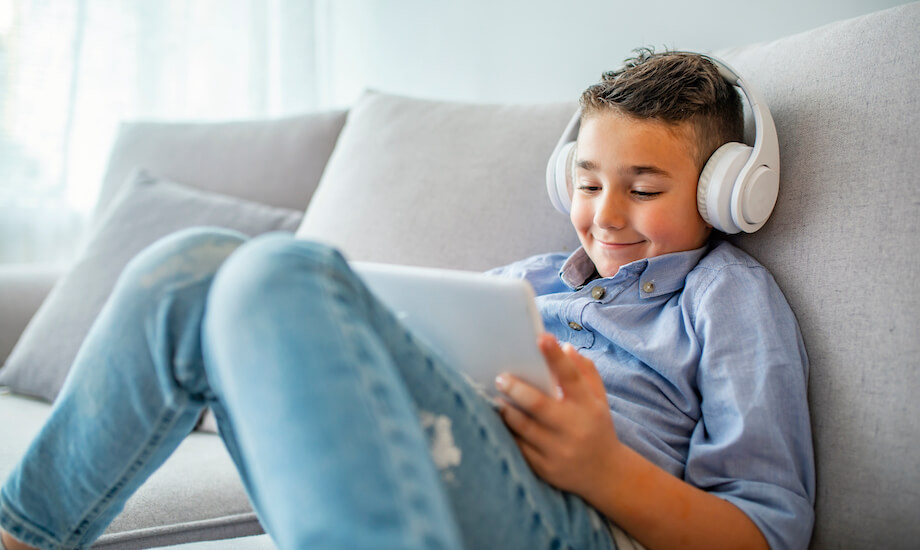

Our children love their tech devices. However, not all screens are created equal. While there are many unhealthy, brain-draining ways for kids to use their laptops and phones, there are just as many healthy, learning conducive ways to use them! Here's our piece on how to healthily balance tech in your child's routine.
We have seen a major shift in the development of technology today. Television is no longer considered to be new or innovative. Children are growing up in a digital age with new technologies surrounding them. Research indicates that technology implementation in the classroom optimizes opportunities for young children’s all-around development. Despite the research, many parents are still fearful of their childrens’ use of technology in the home and at school. Though a valid concern, we must distinguish between the use of passive vs. active technology/interactive media.
Passive technology is the use of non-interactive media. This includes non-interactive television shows, YouTube videos, and scrolling on social media. Non-interactive or passive technology tools are not effective and appropriate for early childhood learners. Passive technology use leads to overexposure and too much screen time. At home, this may look like watching television for an extended period or watching YouTube videos for entertainment. In school, this may look like an extended time playing non-educational iPad games. The use of passive technology does not promote deep engagement or learning.
Active technology is the thoughtful use of technology by parents and educators to engage children in key skills such as play, self-expression, and computational thinking. Active technology is a tool for learning and a means to provide opportunities for all children. Therefore, active technology promotes deep engagement, intentional learning, and supports later success in all academic areas.
The appropriate use of intentional technology and media is dependent on the age, needs, interests, and abilities of the child. Typically, when children experience a new tool for the first time, they begin to make neural connections. There is a developmental progression in children’s use of tools and materials from exploration to mastery. Research indicates that children’s use of technology should be viewed as an opportunity to interact and engage with new tools. Children need time to explore technology before using these tools as a means of self-expression and communication. We must encourage children to explore and experiment with technology tools in the home and at school.
Ready To Help Your Child Improve Their Grades, Test Scores And Confidence?Interactions with technology and interactive media should be playful. Intentional technology use should promote creativity, exploration, pretend play, and active play. Children’s interactions with technology and media are remarkably similar to their interactions during pretend play. By providing young children with opportunities to explore technology and interactive media you are supporting playfulness and creativity.
Finding ways to incorporate technology into your child’s life may be difficult at first but don’t worry, Tip-Top Brain has you covered! When understanding that technology can be a tool for success, we can look into exploring developmentally appropriate practices with technology inclusion. This may look like the following:
Online games are similar to other self-correcting learning activities. Digital games provide opportunities for turn-taking, collaboration, sharing, and problem-solving.
Educational videos can be used intentionally to teach a skill or reinforce a concept. For example, a teacher using a sing and dance along video to practice counting numbers.
An online Read Aloud can do wonders for young children. This provides children with the ability to hear the text, see the text, and understand that words have meaning. Online read alouds may also provide moving images of the illustrations. Children can listen to the book, read along, make connections to the story, and begin reading for pleasure. Not to mention, that online books and read alouds provide a wide variety of reading choices!
Virtual Trips are a wonderful way to implement interactive technology in your child’s life! Virtual trips can range from an online experience to the zoo, aquarium, animal farm, pumpkin patch, rainforests, etc.! This is a fun and engaging way to implement technology in ways that are meaningful. Virtual trips can also be more accessible for families and educators! Virtual trips are amazing as they allow children to explore right from their own homes!
While recognizing the fear of technology and the overuse of these tools, we must differentiate between the use of passive vs. active technology/interactive media. Interactive technology and media offer children many opportunities to extend their learning. The effective and appropriate use of interactive technology enhances classroom experiences, self-expression, computational thinking, parent-child connections, and child interactions. With technology at our fingertips, we can’t wait to see how you implement intentional technology in your home!